#royal naval history
Text
I Am Given a Castle: The Memoirs of Michael Saunders Watson :: Michael Watson Saunders

View On WordPress
#978-1-8991-6388-5#autobiographies#books by michael watson saunders#british castles#british heritage#british library trustees#diaries#first edition books#health service mandarins#historic buildings management#historic houses association#journals#leicestershire castles#memoirs#party heritage group#public accounts committee#public administration#rockingham#royal botanic gardens#royal naval history#royal navy officers#tam dalyell
0 notes
Text
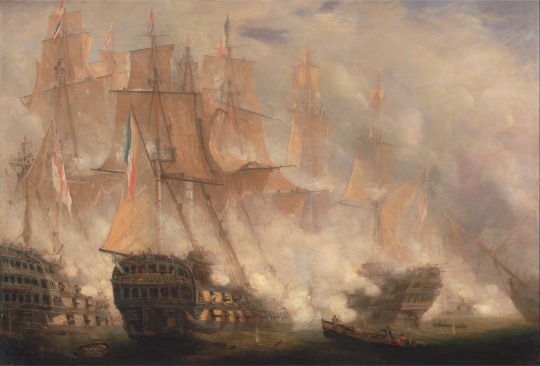
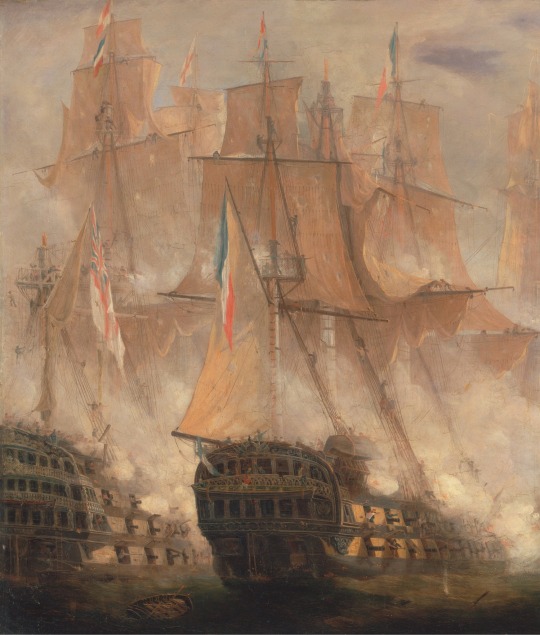
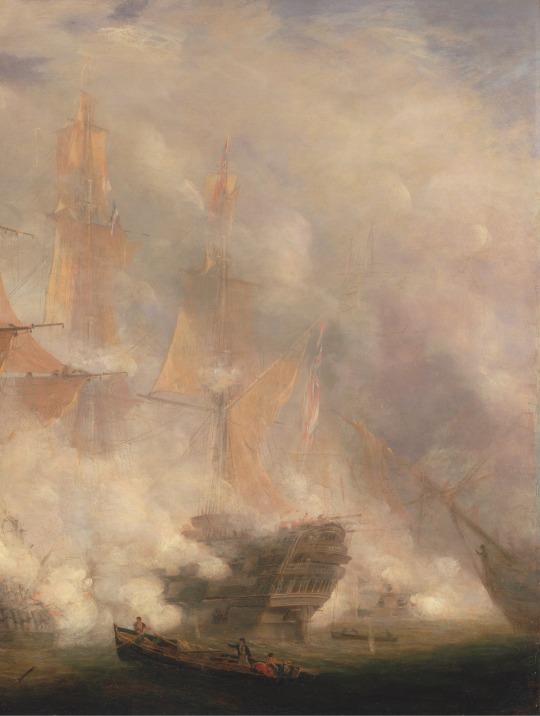
The Battle of Trafalgar by John Christian Schetky
#battle of trafalgar#age of sail#art#napoleonic wars#cape trafalgar#john christian schetky#atlantic#royal navy#great britain#england#britain#france#spain#horatio nelson#trafalgar#english#british#french#spanish#europe#european#history#napoleonic#warship#warships#ships#naval warfare#naval battle#sea
237 notes
·
View notes
Text
Congrats old chap

[Microfilm Caird Library/original private collection]
205 notes
·
View notes
Text
The Raoul (de Chagny) Navy: An Exploration of the Vicomte's Naval Background:
Our beloved Vicomte, Raoul de Chagny, is a young junior officer in the French Navy ("le Royale"), but this hardly gets much exploration. It's a detail that is often glossed over--I anticipate because Naval historians and Phans often do not have much Venn diagram overlap--until now. Let's just say my username is a Naval reference.
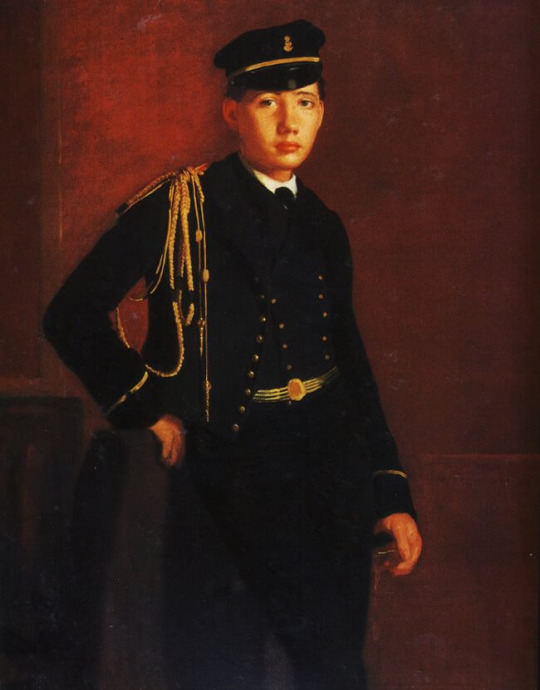
Note: the "Raoul Navy" is not my invention--our hilarious and wise "Phantom Dark Web" friends at Leroux Less Traveled (incl. @box5intern) came up with it, and I love it.
I've started digging into book Raoul and his Naval background and turns out we are missing out a whole lot about Raoul's character background if we don't dig into it. So I'm going to tell you what the book tells us and what that means. I'm going to give you the overall pieces up front, and then explain:
Raoul looks very young and feminine (except for his "little" mustache, which he effectively has grown to prove that he can)--and everyone treats him like a baby
Raoul at this point has already completed three years of Naval training including a world tour, so he is fairly experienced and even worldly for his age. He is described in the French as a "cadet", but he would likely be a sub-lieutenant at this point since he has graduated from the Naval Academy.
He's on a six month leave before going on a very dangerous mission to recover remains of a lost Arctic mission--a mission he himself is unlikely to return from.
And everyone still treats him like he's a baby (especially the old dowager widows), even though he has had quite a bit of life at this point--so he has something to prove.
What we know about Raoul and the Navy (Here is the English):
"He was admirably assisted in this work first by his sisters and afterward by an old aunt, the widow of a naval officer, who lived at Brest and gave young Raoul a taste for the sea. The lad entered the Borda training-ship, finished his course with honors and quietly made his trip round the world. Thanks to powerful influence, he had just been appointed a member of the official expedition on board the Requin, which was to be sent to the Arctic Circle in search of the survivors of the D'Artois expedition, of whom nothing had been heard for three years. Meanwhile, he was enjoying a long furlough which would not be over for six months; and already the dowagers of the Faubourg Saint-Germain were pitying the handsome and apparently delicate stripling for the hard work in store for him."
We also learn in another paragraph that the de Chagnys had admiral in the family, so the Naval connection is likely a family business for second sons. Raoul is a second son, so a career as a military officer would have been a distinguished career for him.
Borda: First ship
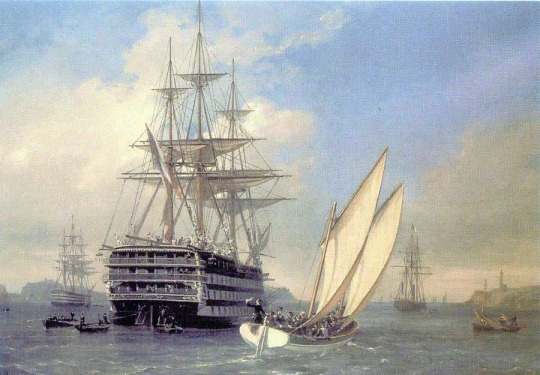
Brest is the main port of the French Navy and home of the Ecole Navale (or French Naval Academy. In the 20th Century it moved, but Brest is still, along with Toulon, a major naval base)
According to the French: Le jeune homme entra au Borda, en sortit dans les premiers numéros et accomplit tranquillement son tour du monde (Note that the French calls him a "young man", not a lad)
The Borda is traditionally the training ship of the French Navy, and there have been six of them. This would have been a cadet/midshipman cruise for Raoul. He would have been on the ex-Valmy, an 120-gun ship of the line, which became the Borda training ship in 1864.
The Borda is also the ship of the Ecole Navale (French Naval Academy)—this means that Raoul attended the academy.
The Naval Academy is two years in Brest, and then their third year is the World Tour—so that timing also aligns with where we are in the book. Raoul would have begun at the academy at 18, and he is at the start of the book, 21 years old.
After the Borda, which he completed with honors, he did an uneventful world tour.
This would have been his third year, still as a midshipman.
He could have been assigned to any ship for this training cruise—possibly a cruiser (the d'Estang is pictured below in 1884 in Algiers), which did long range missions. Note: Their max speed was about 15 Knots (which is a very respectable speed that some warships still transit).
This world tour cold have been as far east as what is now Vietnam, or through the Suez--but likely near French colonies.

With influence, he is assigned to the Requin expedition.
French: Grâce à de puissants appuis, il venait d'être désigné pour faire partie de l'expédition officielle du Requin, qui avait mission de rechercher dans les glaces du pôle les survivants de l'expédition du d'Artois, dont on n'avait pas de nouvelles depuis trois ans.
The Requin was a real ship in the Mediterranean fleet, but did not go on its first mission until 1885, which means that this is a deliberate or unintentional oversight of either Leroux himself or his narrator. The Requin was a steel hull—and the Artois was actually a 18th century Royal Navy ship so this piece is a complete fabrication. However, Arctic missions at this time were frequent and tended not to go well.
However, Raoul could also be excited about getting to go on a new steel-hulled ship. The Redoutable was already in commission—commissioned in 1876. Most of the rest of the fleet at this point were ironclads.
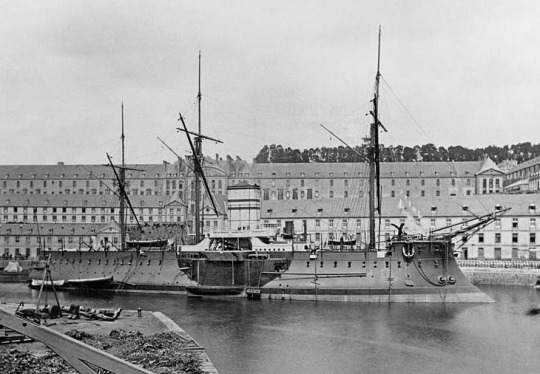
#naval history#phantom of the opera#raoul de chagny#vicomte de chagny#amwriting#phandom#military history#warships#poto#gaston leroux#the raoul navy#french navy#le royale#raoul navy
292 notes
·
View notes
Text

A wax seal impression stamped by the Admiralty Office and dates to 1811
85 notes
·
View notes
Text
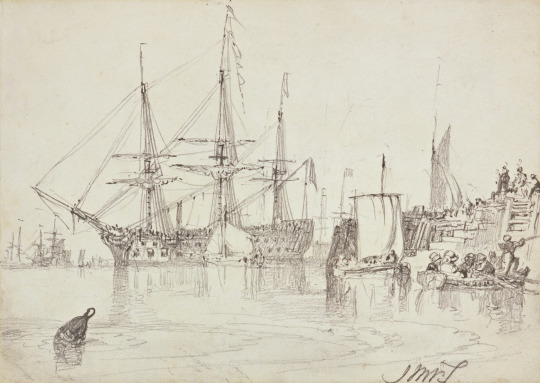
Joseph Mallord William Turner, Man of War.
#age of sail#man of war#royal navy#joseph mallord william turner#jmw turner#tall ship#art#the sea#harbour#maritime history#naval history
131 notes
·
View notes
Photo
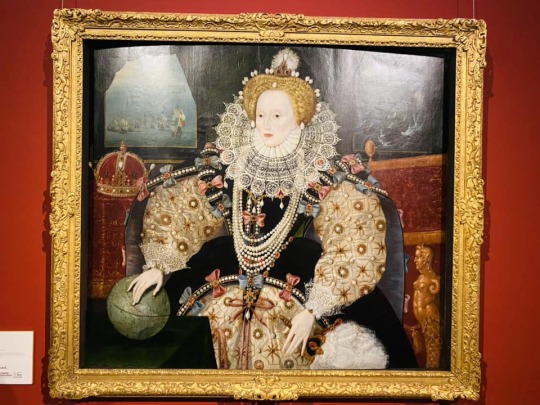

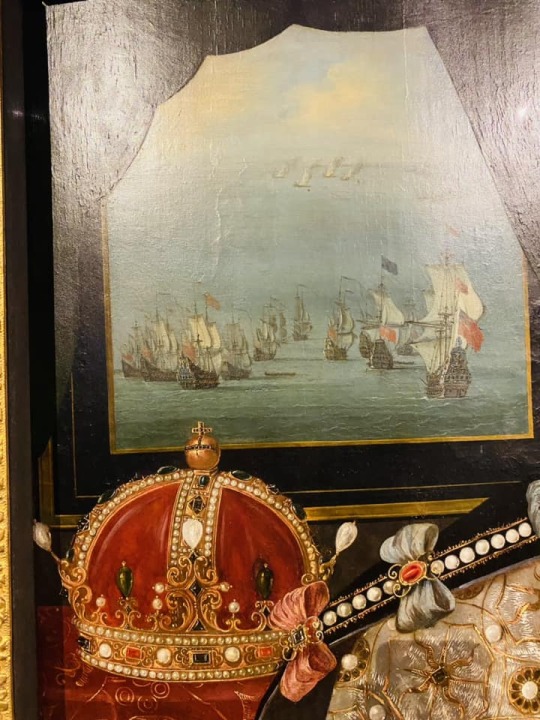

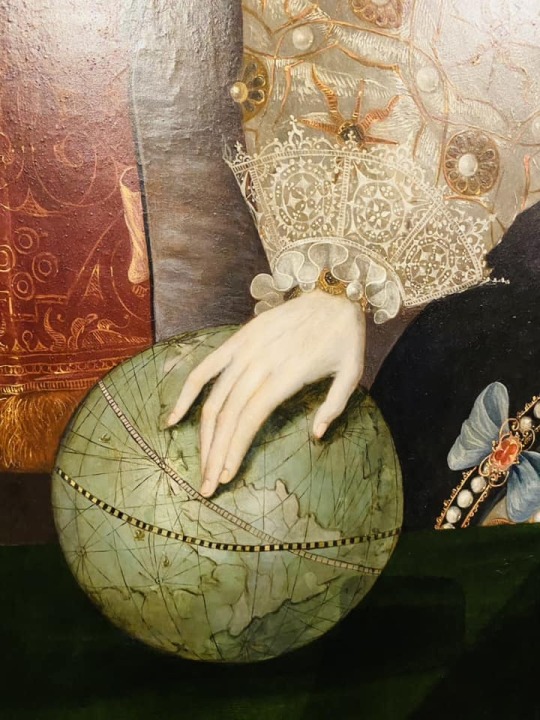
That weird historian thing where you see certain portraits so much in books/TV/online that you sort of forget they're actually real things that exist in the world. Saw the "Armada Portrait" of Elizabeth I in person in Greenwich last month.
#elizabeth i#elizabethan#history#tudor#tudors#the tudors#spanish armada#the spanish armada#16th century#naval history#tall ships#royal
152 notes
·
View notes
Text

HMS Victory being towed to Gibraltar with the dead body of Lord Nelson after his historic defeat of Napoleon's navy - 21 October 1805
#Battle of Trafalgar#HMS Victory#Nelson's flagship#Royal Navy#Horatio Nelson#Napoleonic wars#On this day#21 October 1805#British history#heroism#sea battles#naval art#battleships
85 notes
·
View notes
Text

June 30th, 1914, was the final day of a goodwill visit by the Royal Navy to Kiel, Germany’s principal Baltic naval base, having arrived on June 23rd. The squadron included battleships Ajax, King George V, Audacious, and several light cruisers.
The Kaiser paraded in his Royal Navy Admiral’s uniform (a title courtesy of Queen Victoria), and British and German sailors mingled and entertained each other drinking, dancing and boxing. It was reported that the assassinations of Archduke Franz Ferdinand and his wife, Countess Sophie Chotek, in Sarajevo, dampened the joyous mood a little, but did not ultimately undermine what was described by an American correspondent as an 'Anglo German love-feast’.
Not everyone was totally caught up in the festivities. A senior RN officer, Captain Henderson, found an imaginative way to report on the state of Germany’s naval preparedness, and that Britain's dominance of the high seas was under significant threat.
"...I think it would not be out of place here, to call your attention to the striking progress made by the German Navy in sports and games. Speaking generally, our men were entirely outclassed in all the usual sports, running, jumping, and in the tug-of war, the Germans simply walked away with it. The Germans have systematically invaded what we have hitherto regarded as our natural preserve…the world of sport..."
As the RN squadron departed, a German Admiral sent, 'Best wishes for a pleasant journey’, to which the British commanding officer responded with thanks and the reply, 'Comrades in the past, and always'.
Sources: Roads to the Great War, 1914 - Day by Day (BBC Radio 4, by Margaret MacMillan), The Telegraph
#remembrance day#world war one#first world war#the great war#lest we forget#armistice day#naval history#royal navy
65 notes
·
View notes
Note
Do we know anything about the historical context that allowed Venice to come up with something like the Arsenal? Most accounts kind of treat it as this de Novo idea to mass produce ships, but I feel like history never actually works like that, and Carthaginians were doing that 1,500 years earlier. Were there trends going on elsewhere in Europe and the Mediterranean world that contributed to this industrial breakthrough? Do we know anything about the specific administrators who had to plan this seeming quantum leap in production out? Did a bunch of folks immediately see what the Venetians were doing and copy it? If not, why?
I'm going to take a slightly broader take on this question: the assembly line is not an invention, it's a discovery. So it's not about who did it first, because you have lots of cases of independent discoveries happening in wildly disparate times and places.
I remember quite vividly a talk given by Professor Anthony Barbieri-Low when he first arrived at UCSB, where he argued that the assembly line was first discovered in China...during the Bronze Age. As early as the Shang and Zhou dynasties around 1000 BCE, we have evidence of assembly line techniques being used in the production of bronze and pottery, because the pieces were inscribed on the bottom with indications of which worker did which parts of the process and which quality inspector signed off on the piece as good enough for sale - so that if the thing broke, officials could figure out exactly who to blame for shoddy work.

So it's not that Venice was the first to ever adopt the idea of assembly line manufacture of ships, but rather that they did it more consistently and devoted more resources to it than anyone else, and iteratively improved on the techniques to get production times down to a single day per galley.
The Arsenal of Venice was an enormous complex, roughly 15% of Venice's landmass, surrounded by a two-mile long defensive wall, and employing some 16,000 people. In addition to standardized pre-fabricated parts, the Arsenal also emphasized division of labor with workshops devoted to producing everything a warship might need in-house - rope, rigging, masts, planking, sails, nails, guns, etc. Organizing these supply chains, what we might call vertical integration, was an incredible logistical feat in and of itself.
In terms of technology, the Arsenal pioneered frame-first (as opposed to hull-first) construction, a moving assembly line whereby galleys were floated down a canal to different stages of the production process, new forms of firearms, and new kinds of ships llike the galleass and galleon. Galileo was a major consultant to the Arsenal at the height of its power.
In addition to the technical advancements, all of this required a lot of money - roughly 10% of the Republic's entire budget - and what made Venice truly unique was its ability to devote those kind of resources on a regular basis at a time when even powerful empires like the Ottomans and the Spanish were still using the yo-yoing methods of medieval fleet construction.
#history#economic history#ancient history#renaissance history#arsenal of venice#galley#ships#medieval navy#royal navies#royal fleets#military history#naval warfare
65 notes
·
View notes
Text
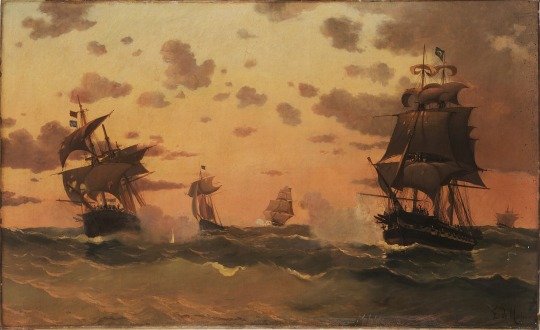
Surrender of the General Dorrego Corvette by Edoardo de Martino
#edoardo de martino#eduardo de martino#art#age of sail#marine art#naval battle#brazil#argentina#brazilian#argentine#imperial#navy#south america#history#empire of brazil#imperial brazilian navy#armada imperial#cisplatine war#cisplatin war#general dorrego#la bertioga#rio da prata#ships#ship#naval warfare#naval battles#south american#sea#waves#royal navy
75 notes
·
View notes
Text
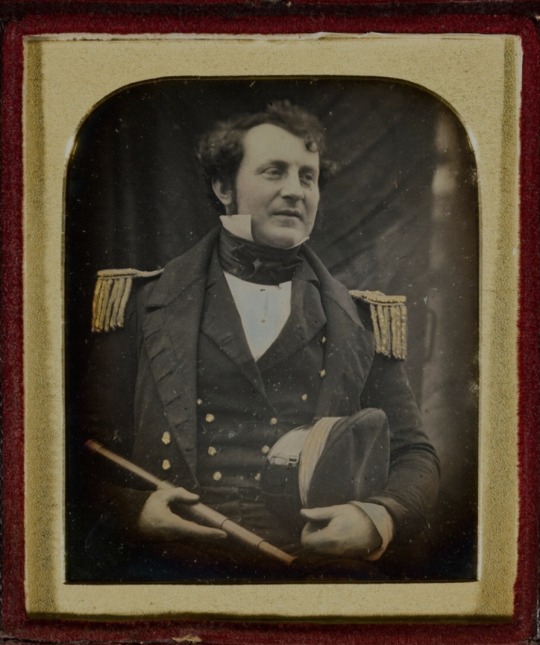
THERE HE IS! 🥰 The second Fitzjames daguerreotype of which we only had a picture. Coming up for auction soon at Sotheby's. Oh please let these daguerreotypes be acquired by a public institution. 🙏 You will be able to see the daguerreotypes at Sotheby's London from 15 until 20 September!
Also we finally get to see Francis Crozier's lost daguerreotype, of which we also only had a picture.
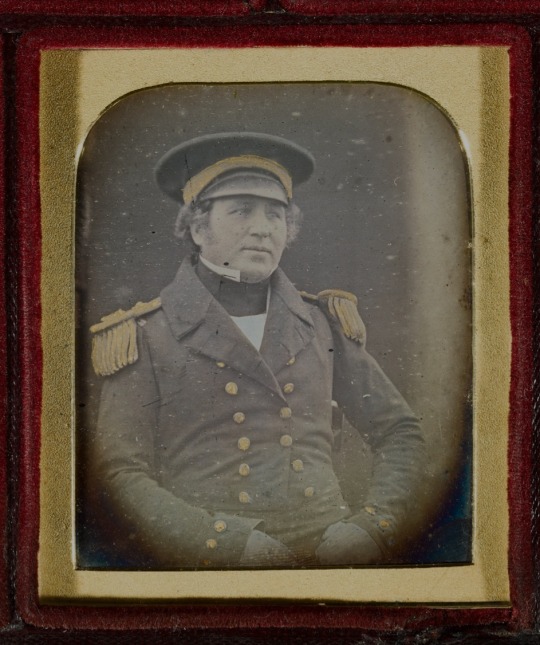
See the other daguerreotypes here: https://www.sothebys.com/en/buy/auction/2023/travel-atlas-maps-photographs/studio-of-richard-beard-a-set-of-14-daguerreotypes
#franklin expedition#james fitzjames#royal navy#naval history#the terror#francis crozier#daguerreotype
442 notes
·
View notes
Note
This might be an absurd question to ask, but what type of ships were the Erebus and the Terror? I've recently had an interest in Polar Expeditions (particularly the ships themselves). I would look it up myself but I have a phobia of dead/decaying bodies and mummified people, and I am almost certain looking up "Franklin Expedition" would show images of the dead.
Thank you.
Hey there, friend! That's not an absurd question at all, and if you're at all uncomfortable with images of dead people, not searching "Franklin Expedition" online is probably a very wise decision.
HMS Terror and HMS Erebus were both bomb vessels, which in the 19th century Royal Navy meant full-rigged ships (three masts, square-rigged sail plan) made with extremely strong hulls to withstand the recoil of their weaponry—mortars that fired explosive shells, rather than cannons that fired more traditional shot. This type of weaponry was usually used for the bombardment of land-based targets, as in the famous bombardment of Fort McHenry during the War of 1812, in which Terror participated.
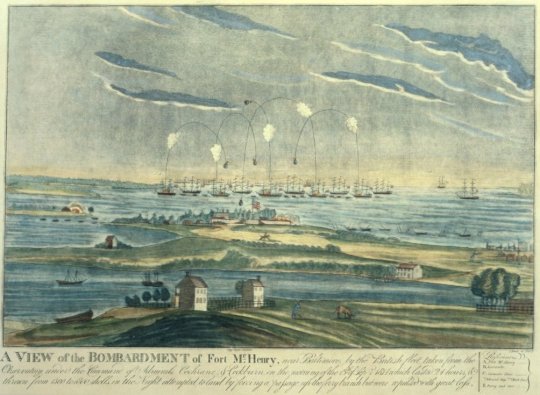
A View Of The Bombardment of Fort McHenry, © Public Domain.
The reinforced hulls that were made to withstand mortar recoil were also able to withstand (at least, to a certain degree) the immense pressure that would come with being icebound, so during the late 18th and early 19th century, bomb vessels were the preferred ships for polar exploration.
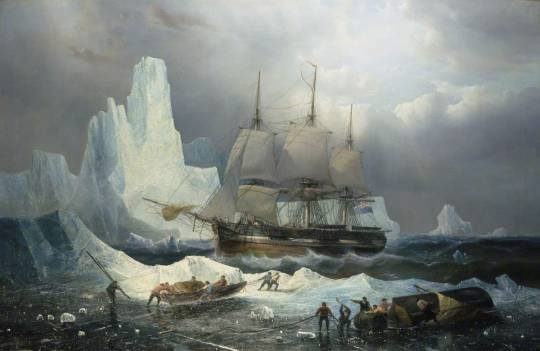
Erebus In The Ice, © François-Etienne Musin
Later polar expeditions tended to use whaling ships, like the Nimrod and the Terra Nova, or purpose-built polar exploration vessels, like the Endurance and the Fram. I hope this helps!
#ask#polar exploration#hms terror#hms erebus#franklin expedition#maritime history#royal navy#naval history#war of 1812#bomb vessels#nautical#19th century#the terror amc#definitelynothanna
52 notes
·
View notes
Text
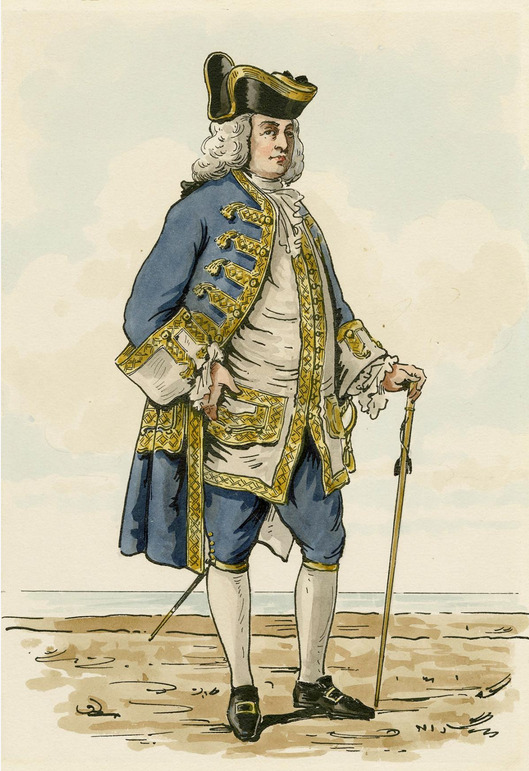
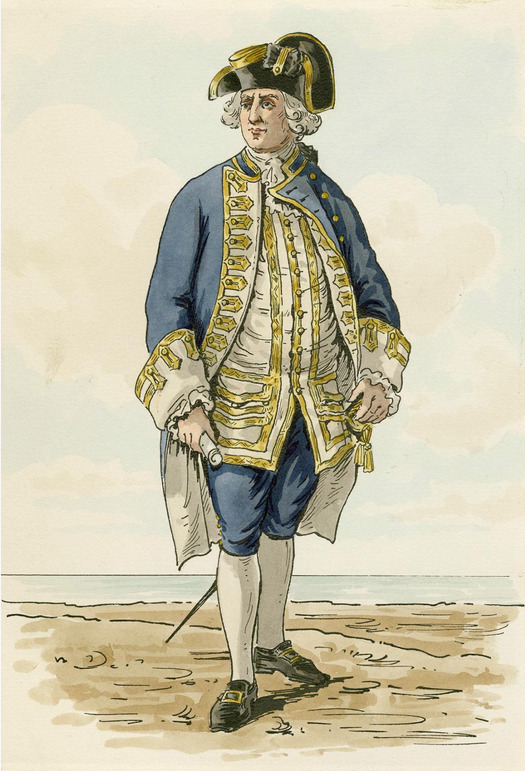

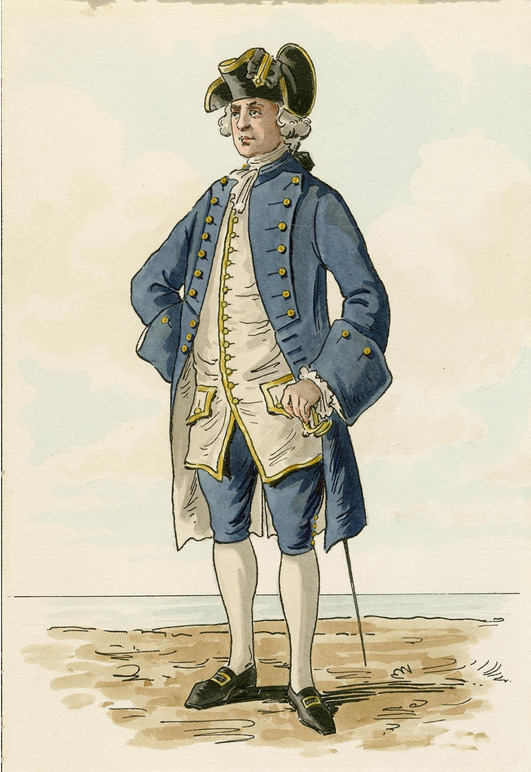
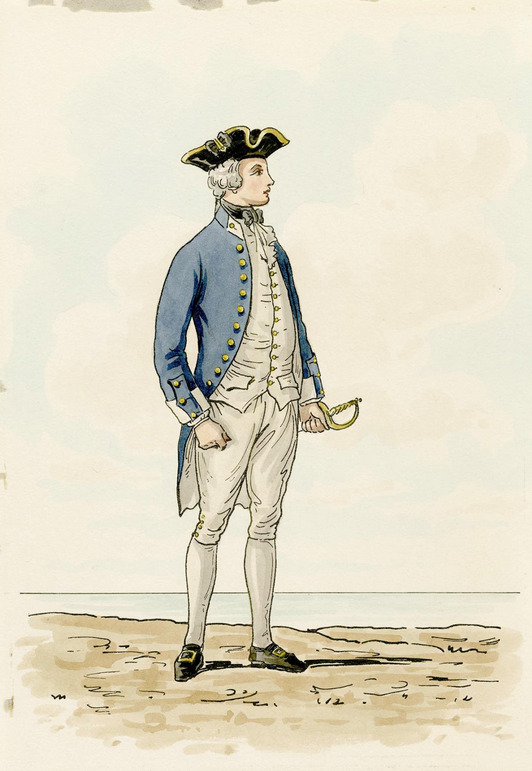

Early Royal Navy Uniforms and dress of an Admiral - Vice Admiral - Post Captain - Lieutenant - Midshipman - Sailor, c. 1760, by unknown, c. 1913
254 notes
·
View notes
Text
It's Franklin Expedition day! HMS Erebus and Terror departed Greenhithe, Kent one hundred and seventy-eight years ago today, on 19th May 1845.

The contemporary illustration of the expedition departing in The Illustrated London News:

In the last few days before he sailed, Franklin may have experienced a premonition of his fate. Suffering from the flu, he was resting at home with his wife, Jane, who had just finished sewing a silk Union Jack for him to take. Concerned about his illness, she draped the flag over his legs for warmth. He sprang to his feet: “There’s a flag thrown over me! Don’t you know that they lay the Union Jack over a corpse?” But on Sunday 18 May, the eve of his departure, with his wife and daughter present, the profoundly religious Franklin read Divine Service for the first time to his crews. And when the expedition sailed from the Thames the next morning, carrying 134 officers and men, most felt the Franklin expedition could not fail.
— Owen Beattie and John Geiger, Frozen in Time
#franklin expedition#royal navy#polar#naval history#1840s#1845#arctic expedition#sir john franklin#Eighteen-Forties Friday#(and how)#hms erebus#hms terror#age of sail#age of steam#early victorian era
288 notes
·
View notes